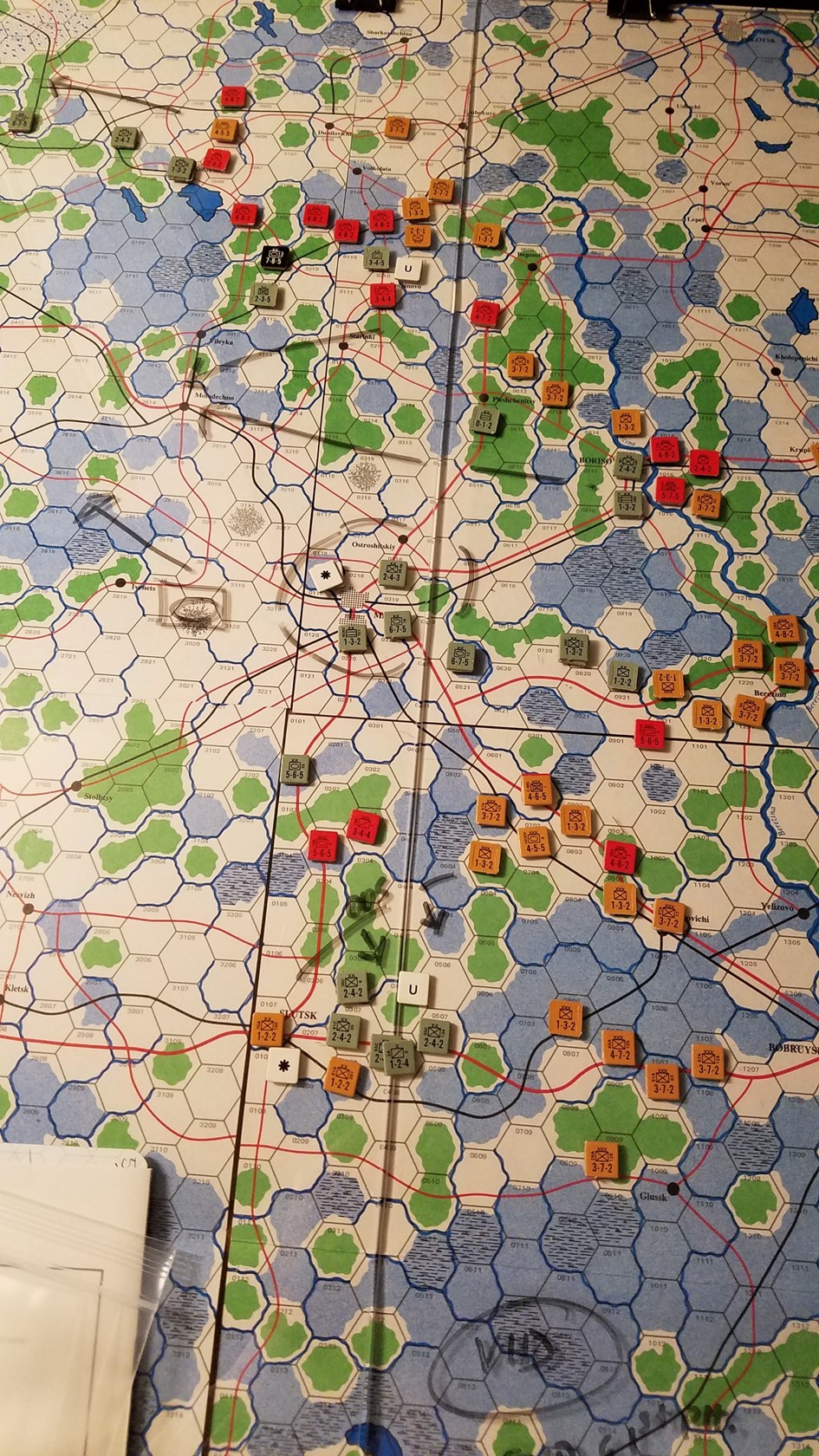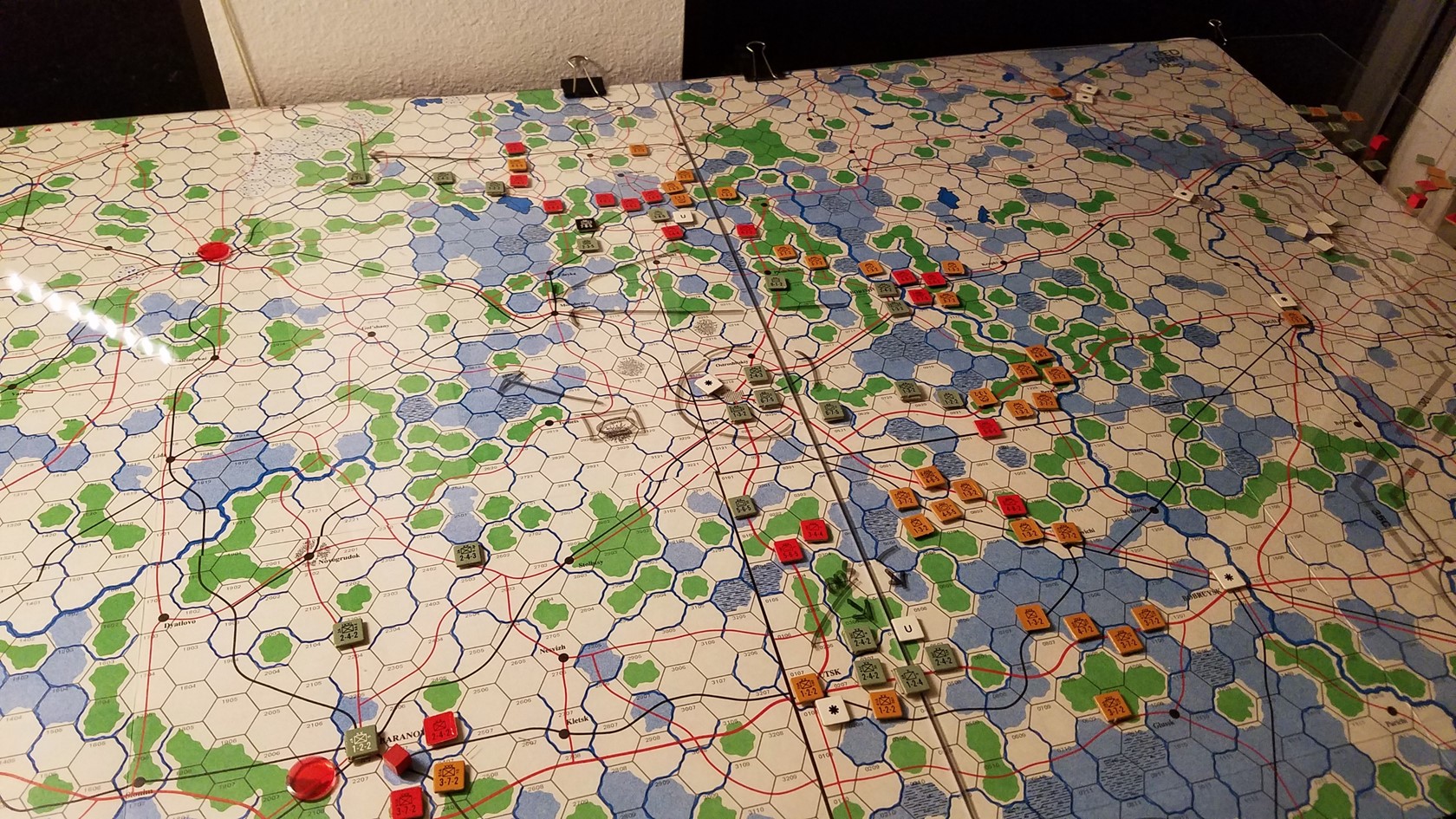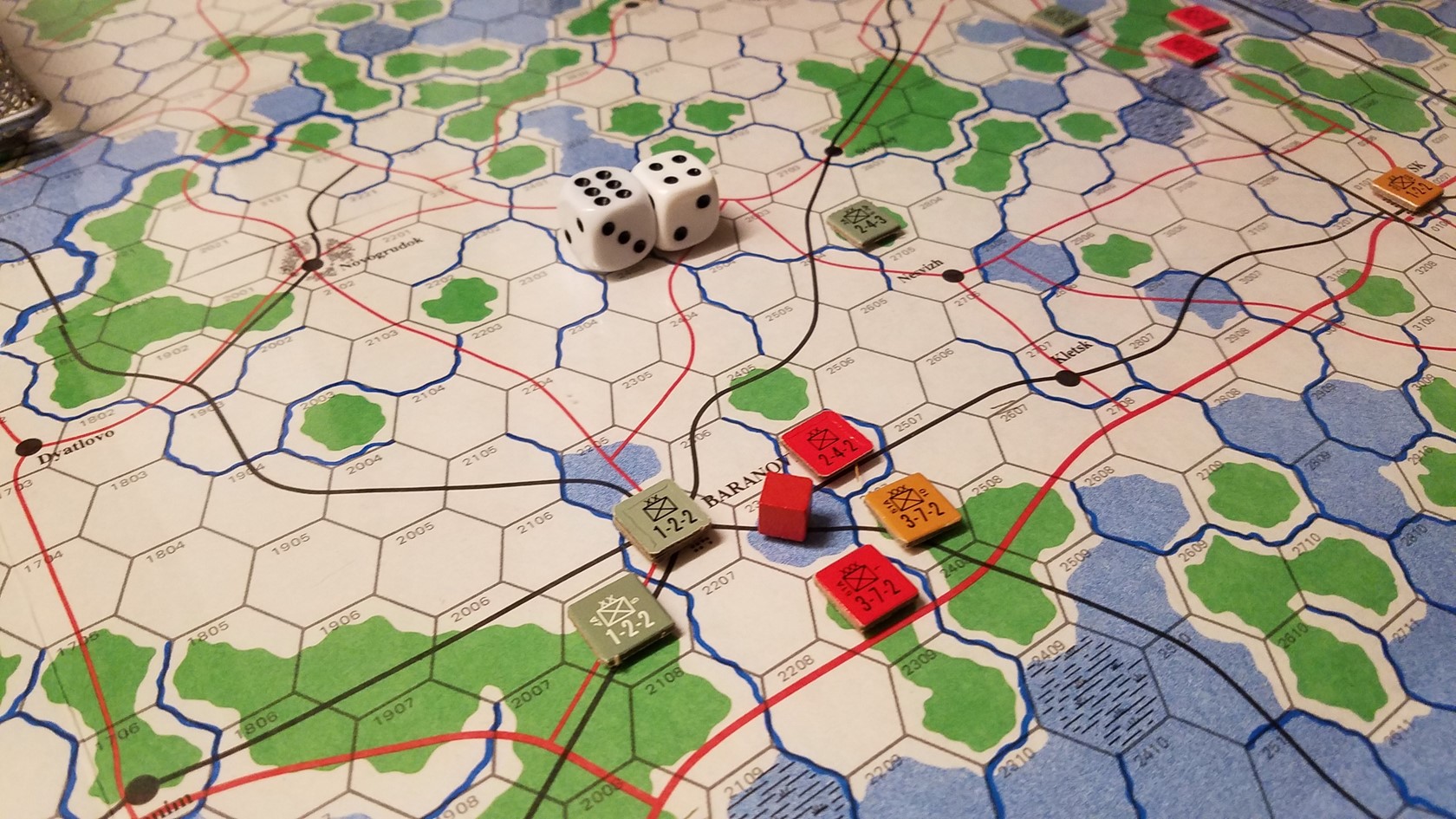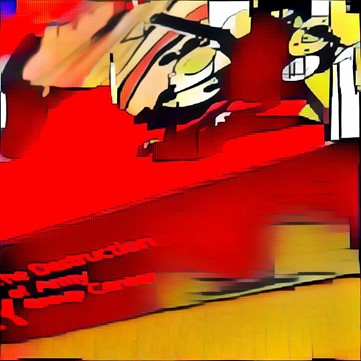
Note this write up uses these guidelines
This mid 80’s title from GDW was developed & Designed by Frank Chadwick. This is self-evident with the clean crisp rules writing that are easily digested. Plus you have elegant play. I use the word elegant carefully here. As the topic is a one sided hackathon, so really what could be elegant about it. Well lets dig into that for a bit.
“Pleasingly graceful and stylish in appearance or manner or for the scientific types: pleasingly ingenious and simple.” are some definitions of elegant.
These would be apt. Another definition suggests that something is elegant when it is fine and superior. This is perhaps the best definition for my needs. Having now played two different titles and assessed a third AGC destruction title, the Red Army and the rules system there in are just that, Fine and Superior. Finely crafted and most certainly superior to its direct competitors. Why?
- Rules clarity
- Sequence of play
- Map hex size
- Play pace and play tension
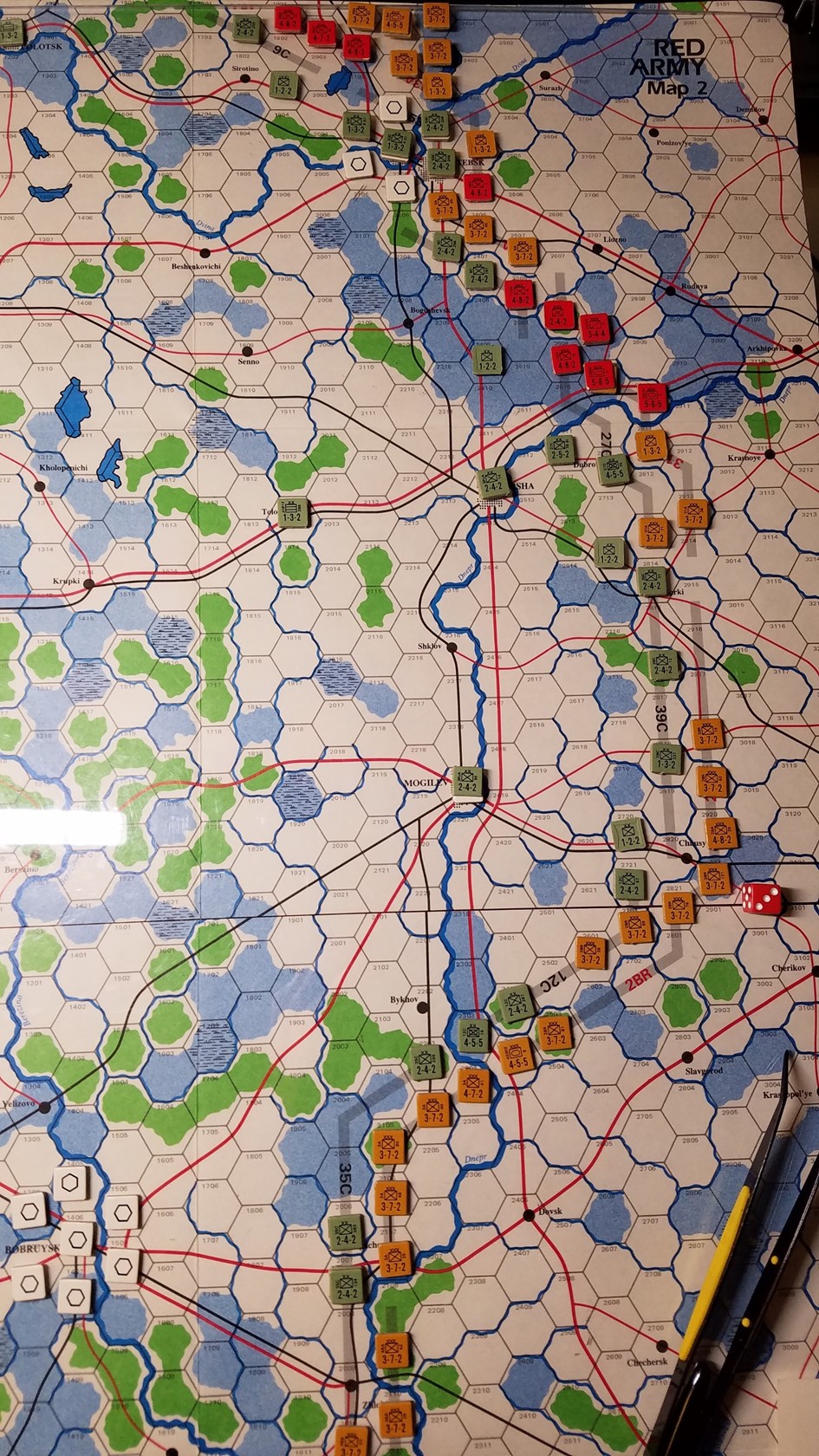
At the outset you are placed in a decision space that provides you with the command of several Army scale groups [Corps] as the Soviet player or an Army Group as the German. You will direct forces at the divisional and to a limited extent in the Soviet case XXX scale units. The setup up is rapid and the larger scale hexes give everything a monster feel with a daunting perspective of the ground toe be covered or the terrain to defend. Time is measured in 24 hour periods and runs a full 17 turns for the campaign or a race to capture Minsk by Turn 6 shorter game.
June 1 is the first turn.
We have a Gods eye view and as such intelligence is complete. In this game I have no issues with this construct as the potential for surprise is limited by the heavy marsh and swamp type terrain. In this game the Sequence of play follows this simple method: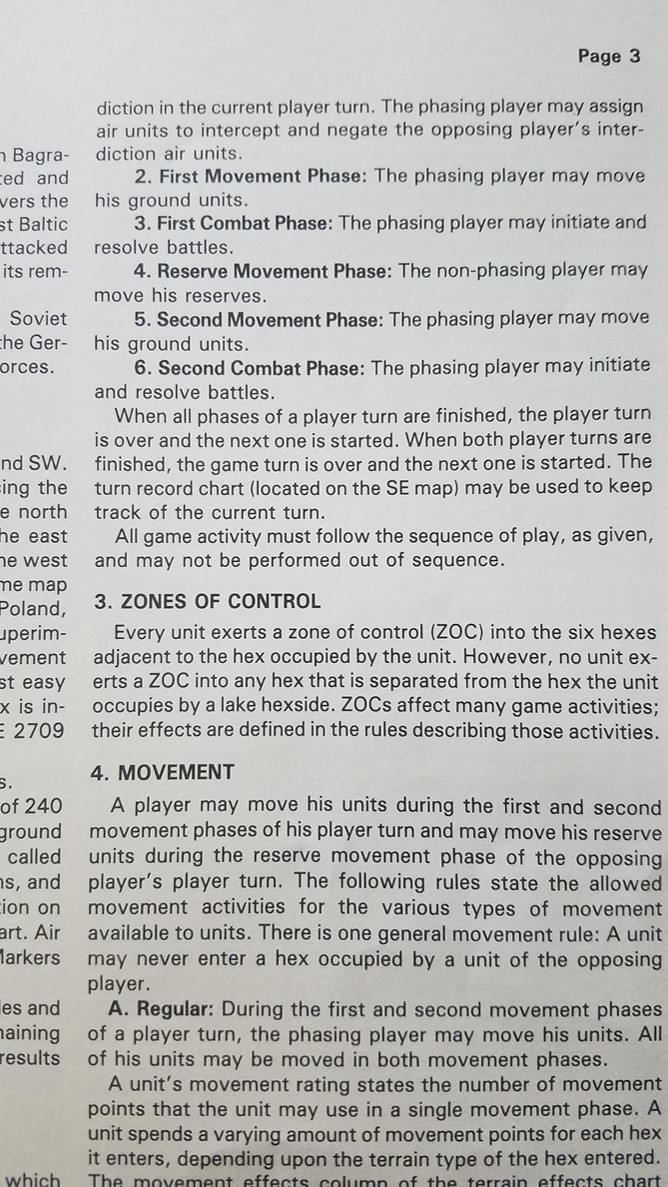
The first impulse is your assess supply, reinforcements and allocation of air. At first glance the sequence above is not odd nor are the counters.
But the counter factors are rated Movement combat factor and Static combat factor, the third number across on the counter is the movement factor.
Thus if you move in the move phase you will attack with reduced strength. Meaning you will need to be adjacent to your enemy to apply full power. This is all the more difficult with a no advance after combat rule for both sides! A very different cadence, aimed at forcing some doctrine on the Soviets. One aspect of the sequence of play is that the reserve phase was rarely used. One side is either busy retreating OR its too busy attacking to be worried about holding units back for the odd counter attack. Similarly the air war is abstracted just enough to be tasty but not so much as to bog down as a game within a game.
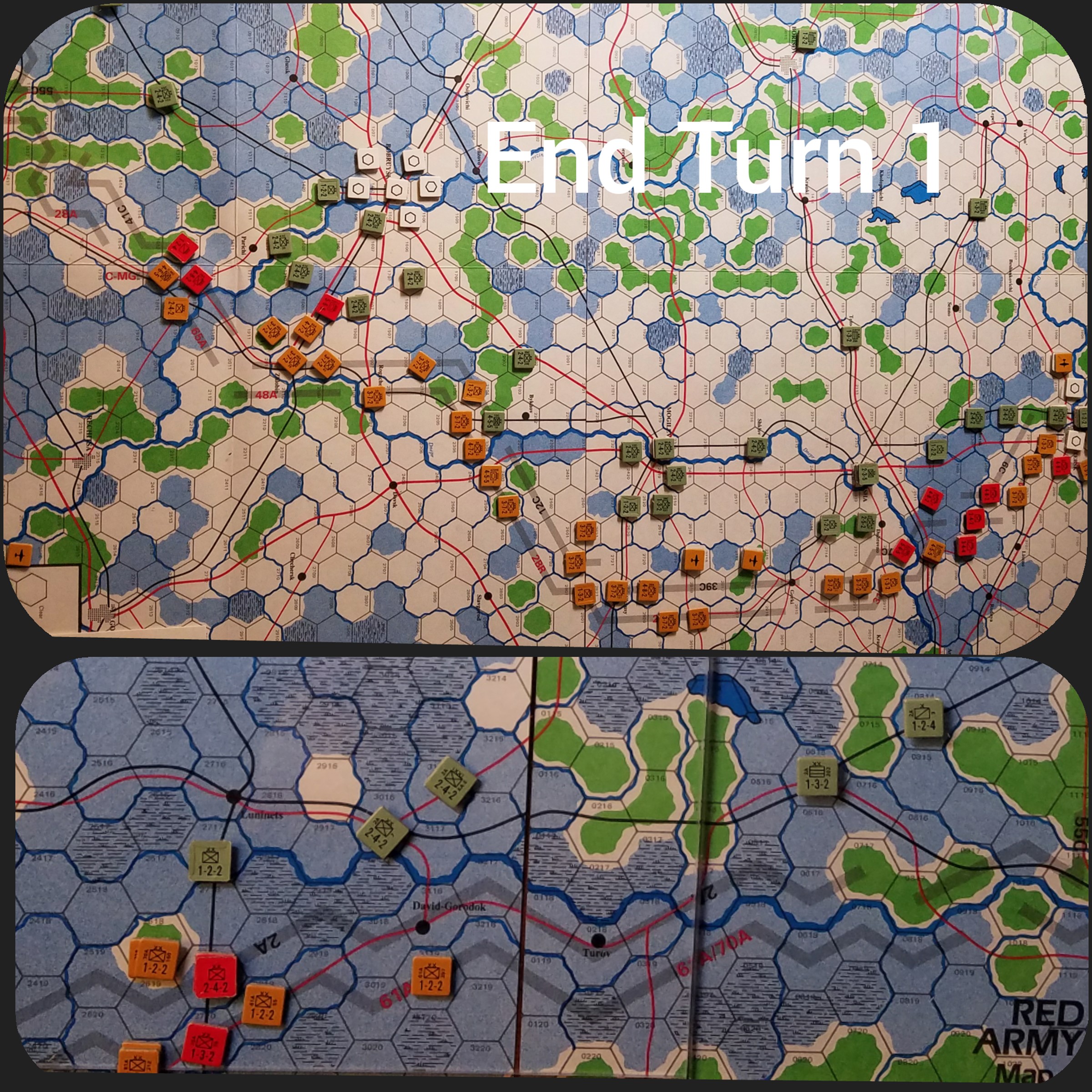
Above the opening moves see modest gains for the Soviets with some step losses. Some units can be flipped for losses other go to the dead pool on 1 loss. There are no replacements only those that are scheduled on the replacement track. The first thing to note is that movement rates are SLOW!! This really puts pressure on the game flow for the Soviet.
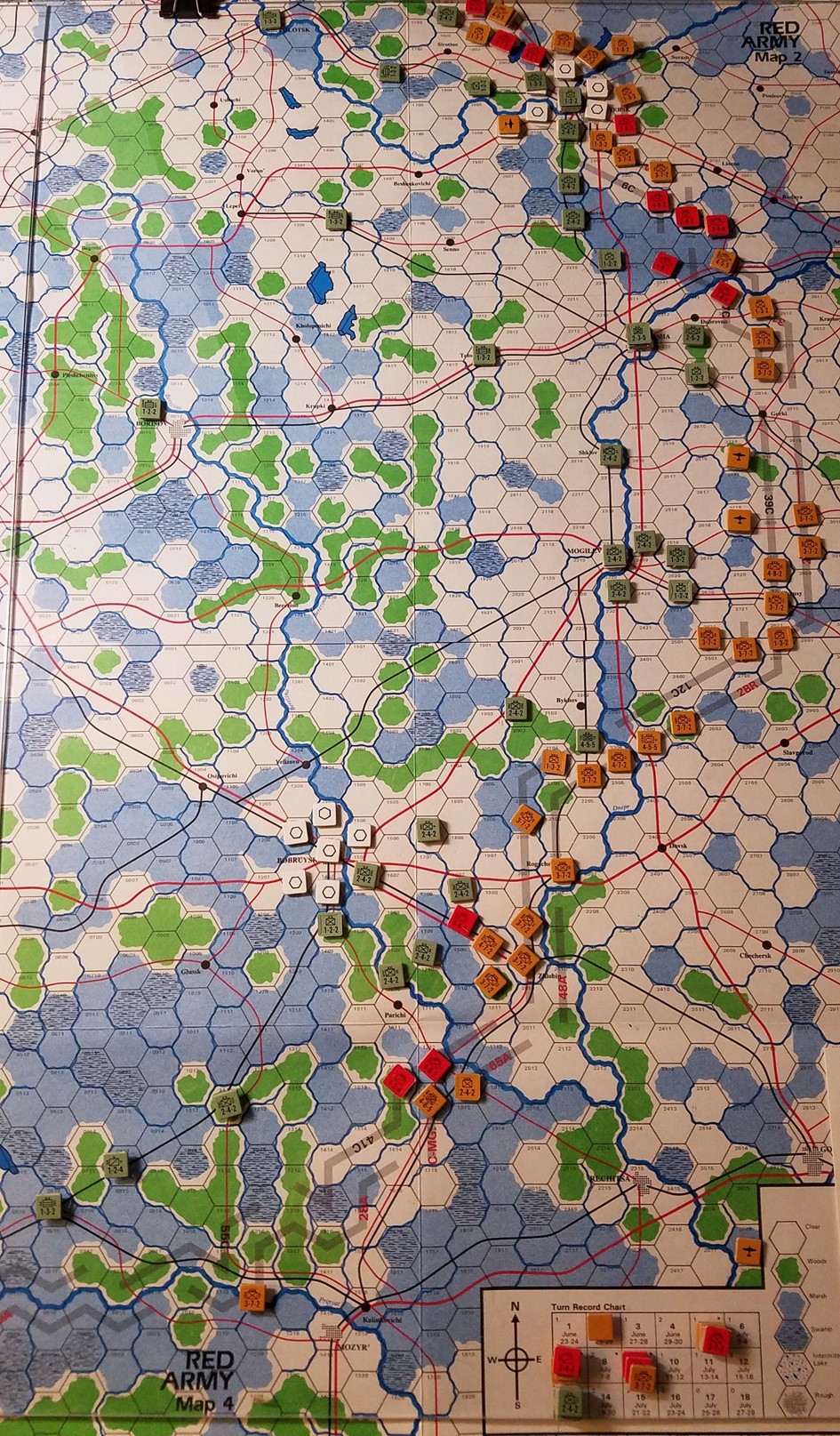
Above top of Turn 2.
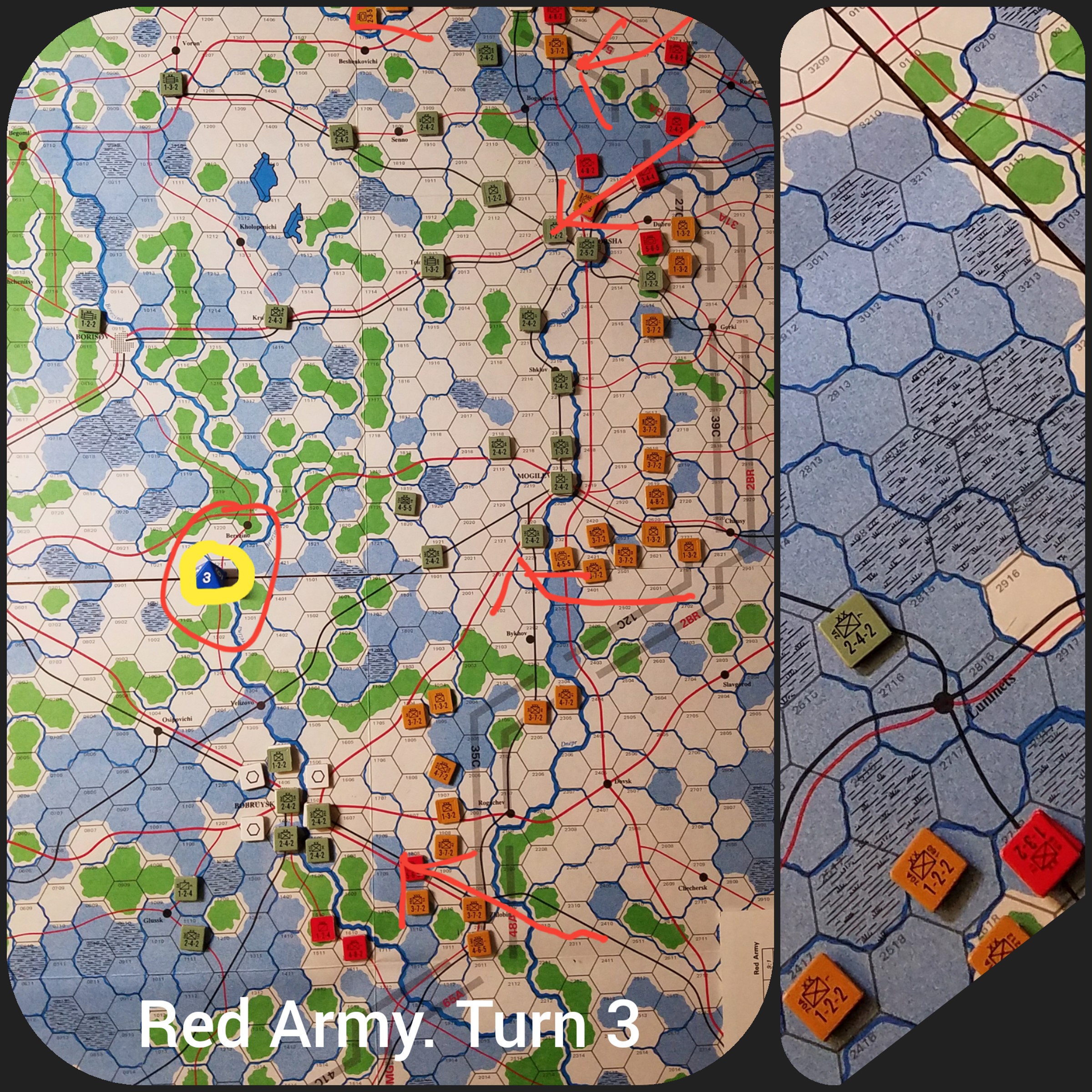
Once the oddity of no advance after combat is factored into your game play things settle down and become smoother. The Soviet player must accept losses, and lots of them. All the while weighing off on the concerns of having enough forces to continue carrying the fight forward across two maps of terrain.
In the game the winner will be the one that achieves the objectives of Force decimation and physical control of the key cities plus if possible exit units from the board.
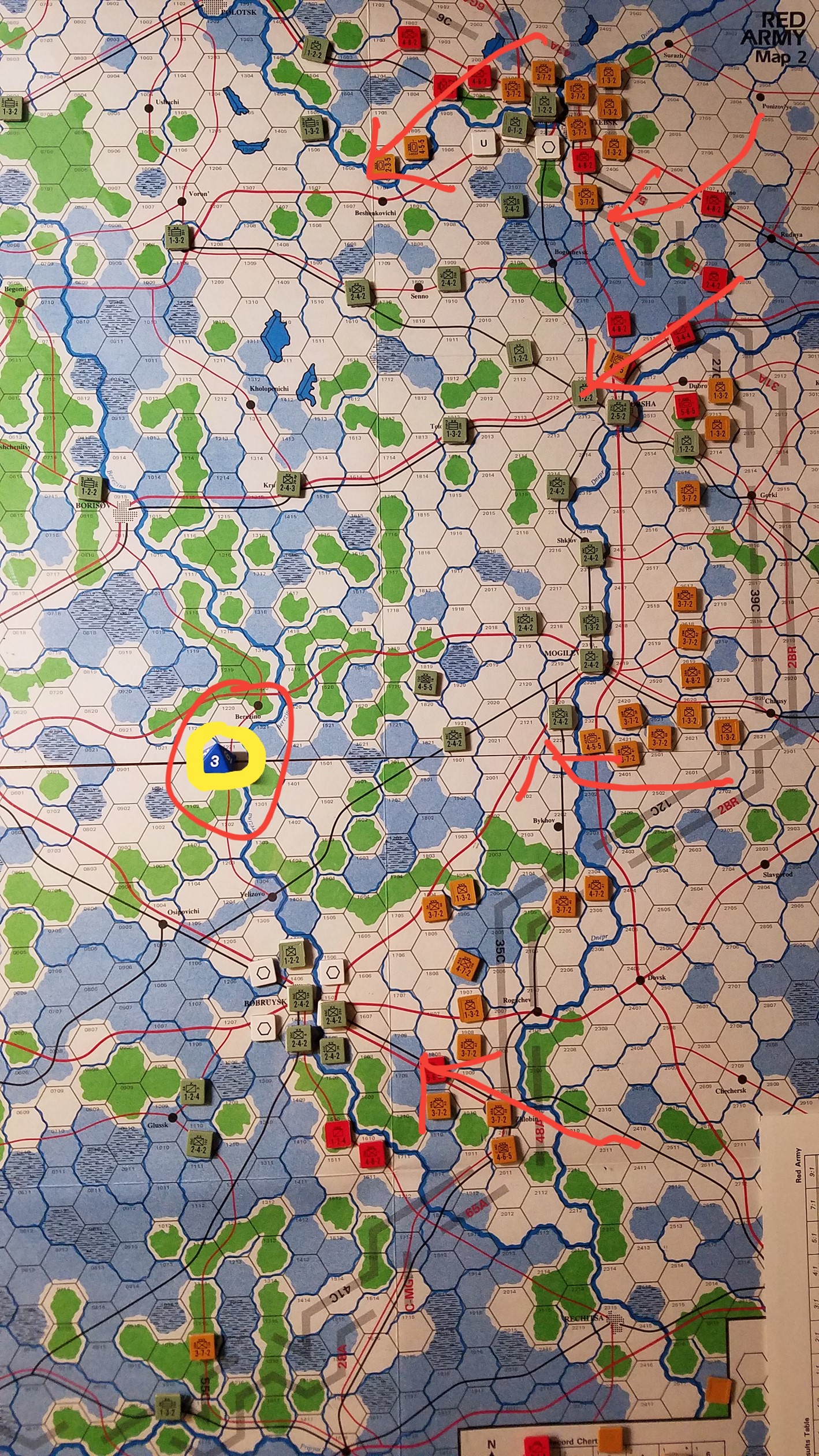
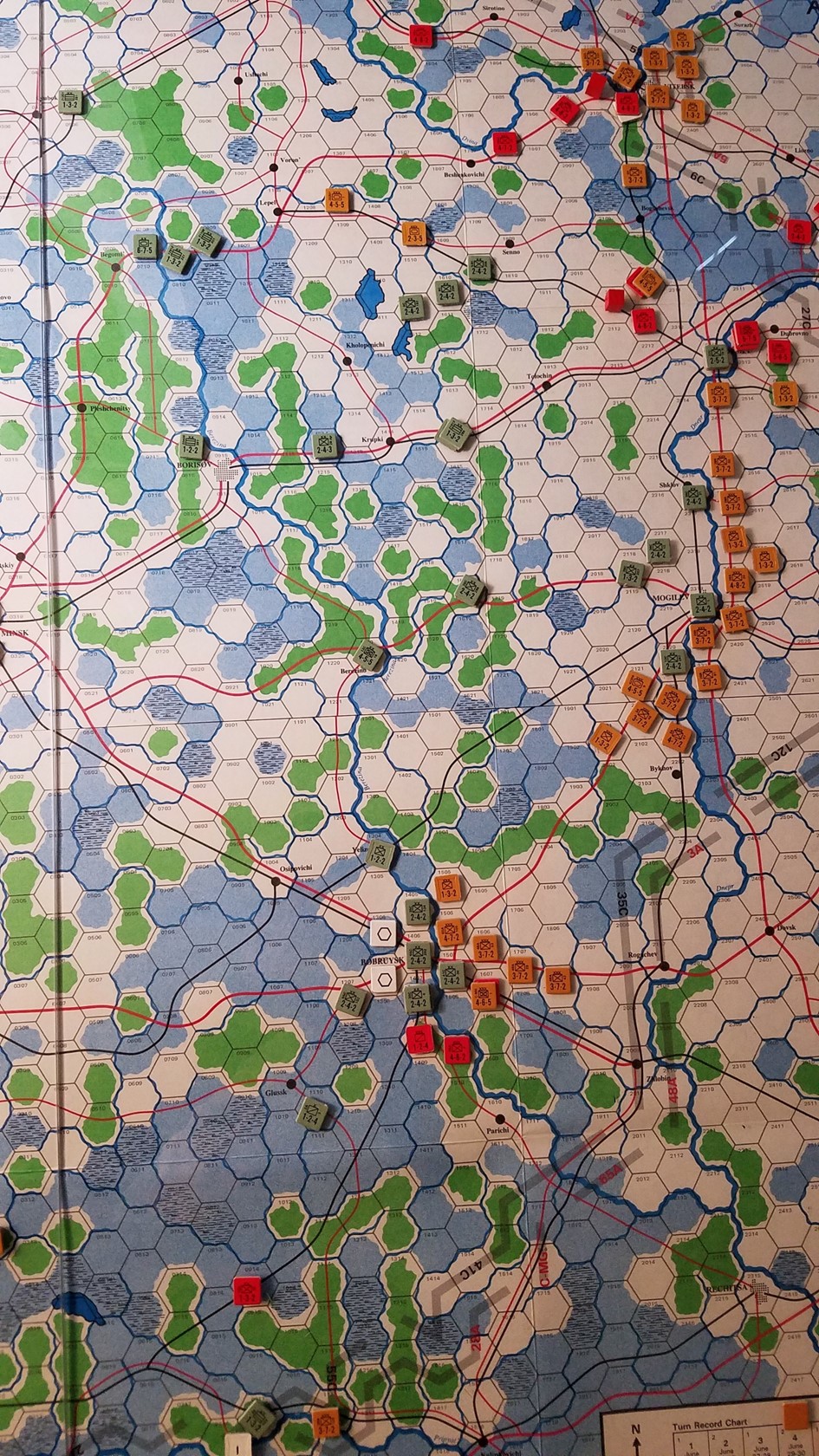
By turn 4 the Germans have realized they should have retreated faster, more likely on Turn 2. The soviets however are well behind the historical rate of advance. Both sides losses are high.
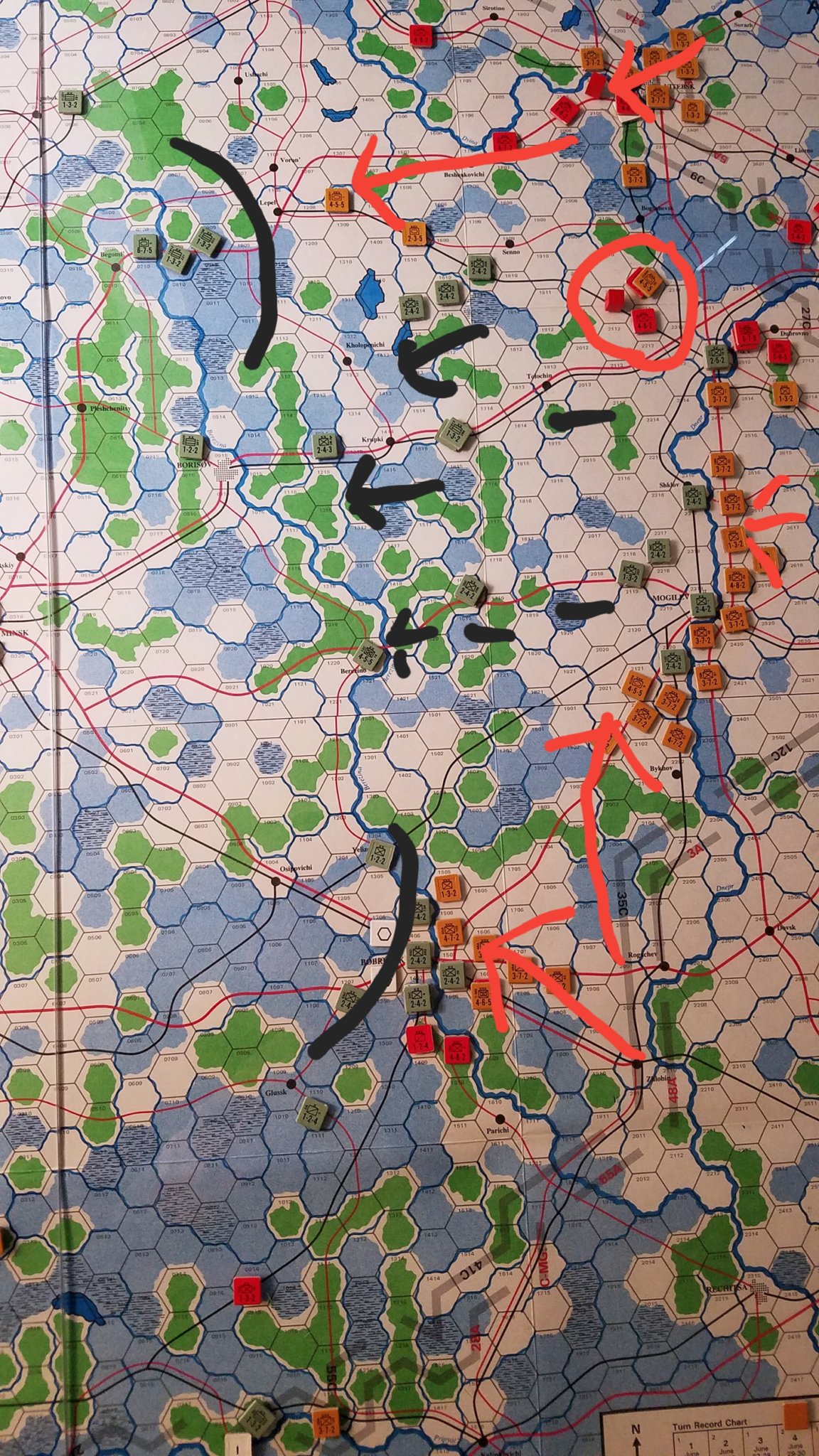
Turn 5 in the North the Soviet forces shove the Germans back aggressively.
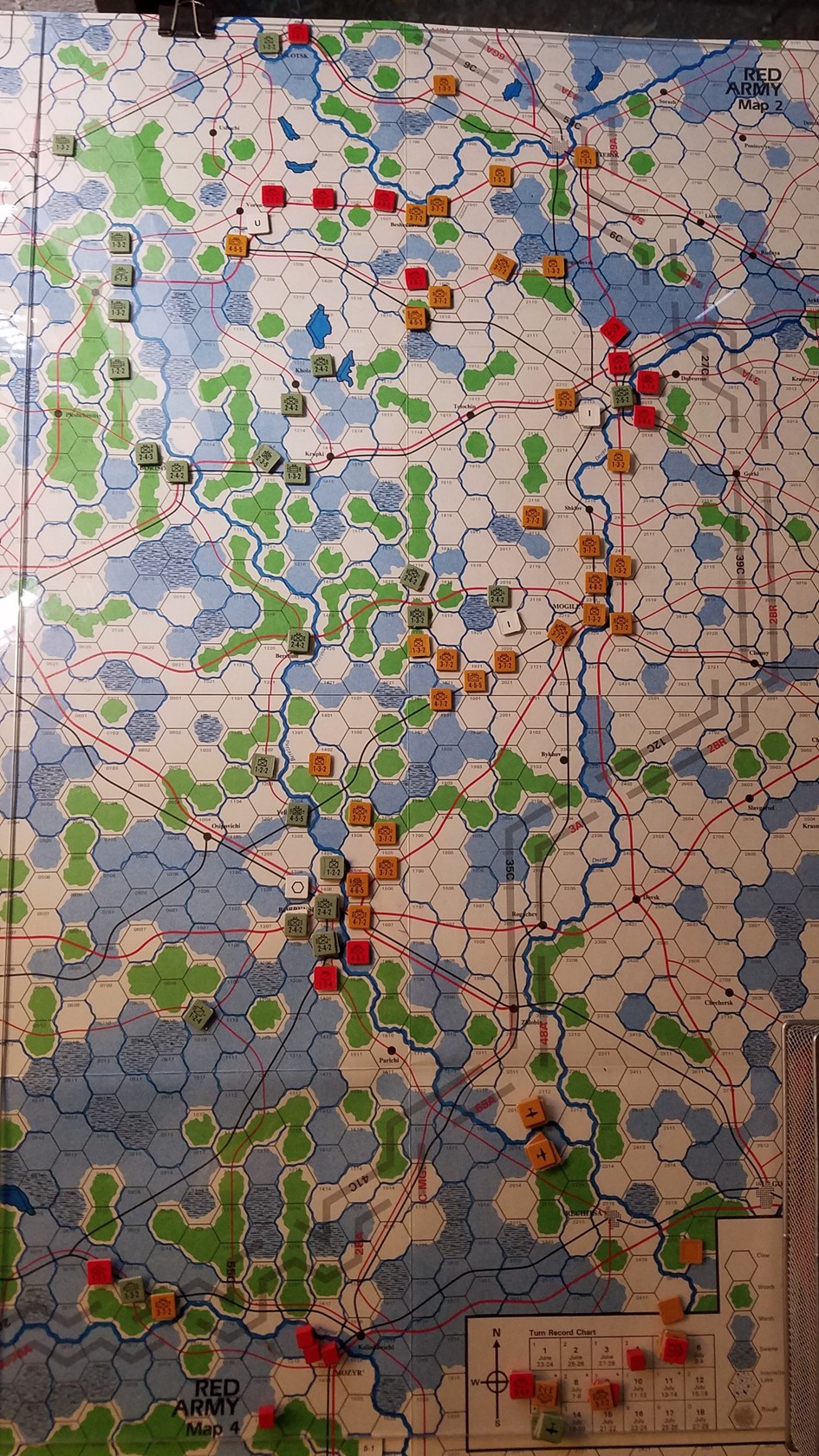
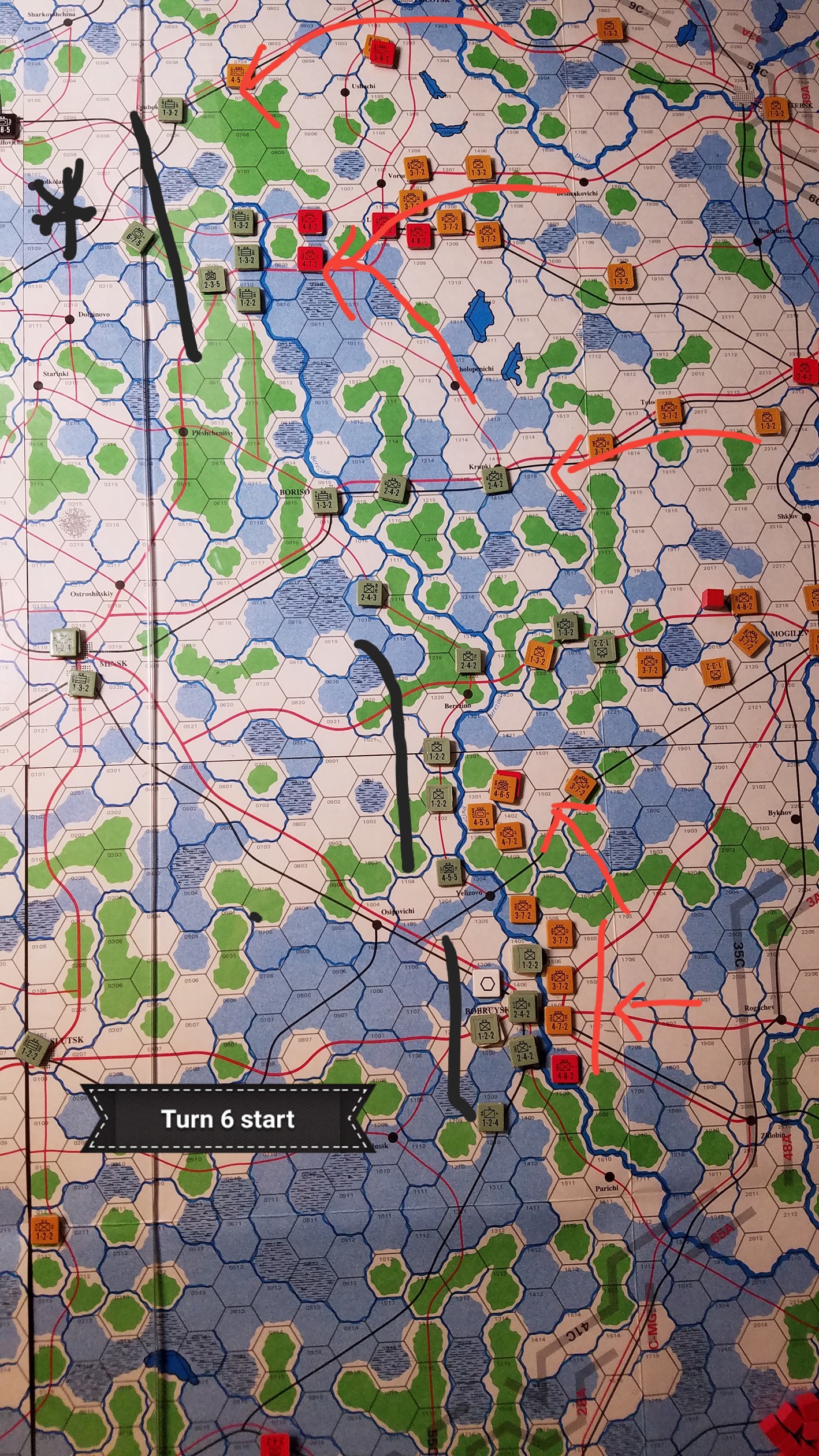
51st Armies arrival leverages the rail rules to pounce on the South Western flank.
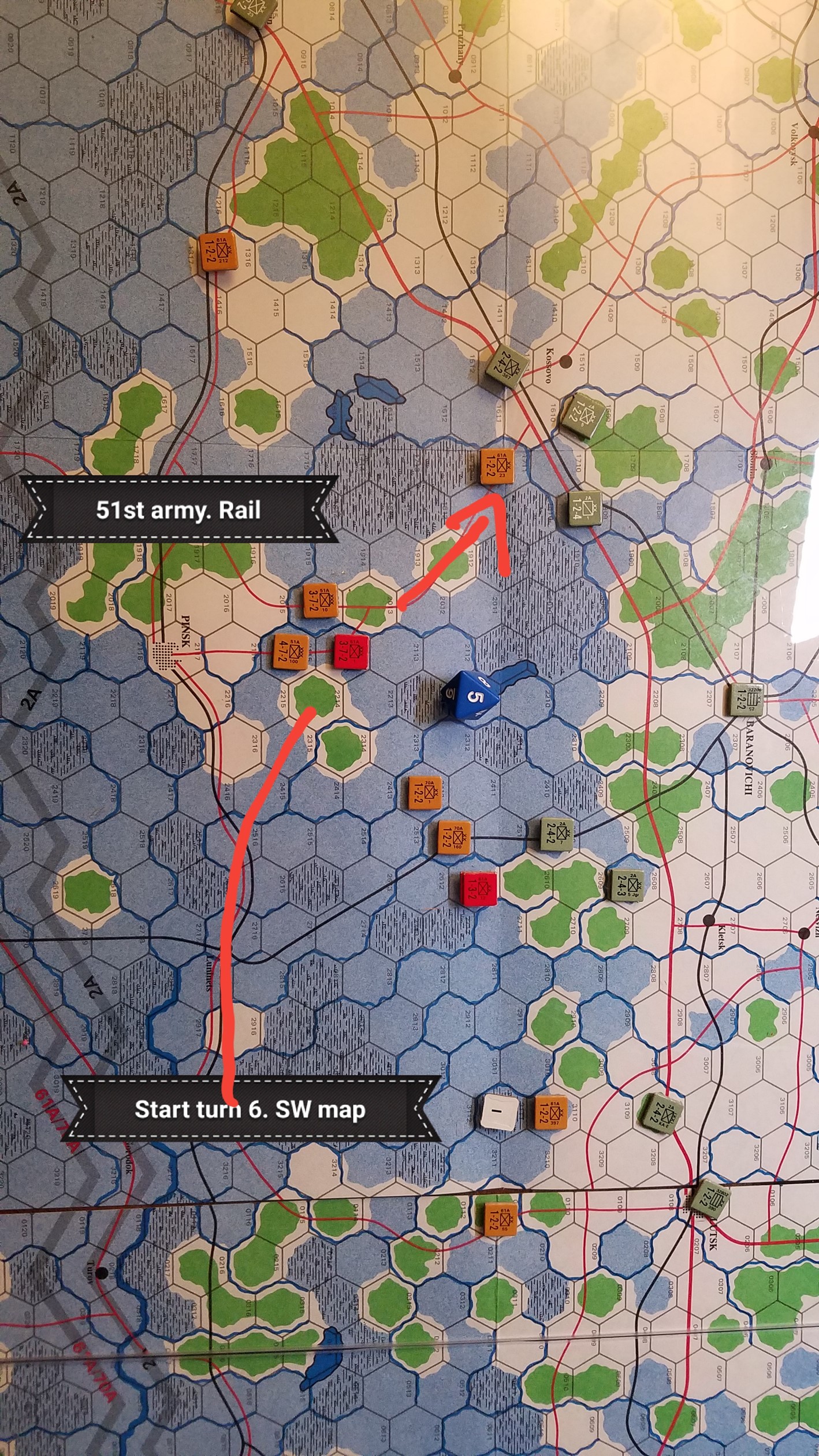
The CRT favours the defender, by a fair margin. Nearly every result will look to inflict a loss on the attacker. Logistics are easy to manage and adopt a formula similar to other GDW titles tied to cross country to a road or rail line mapping to a supplied edge.
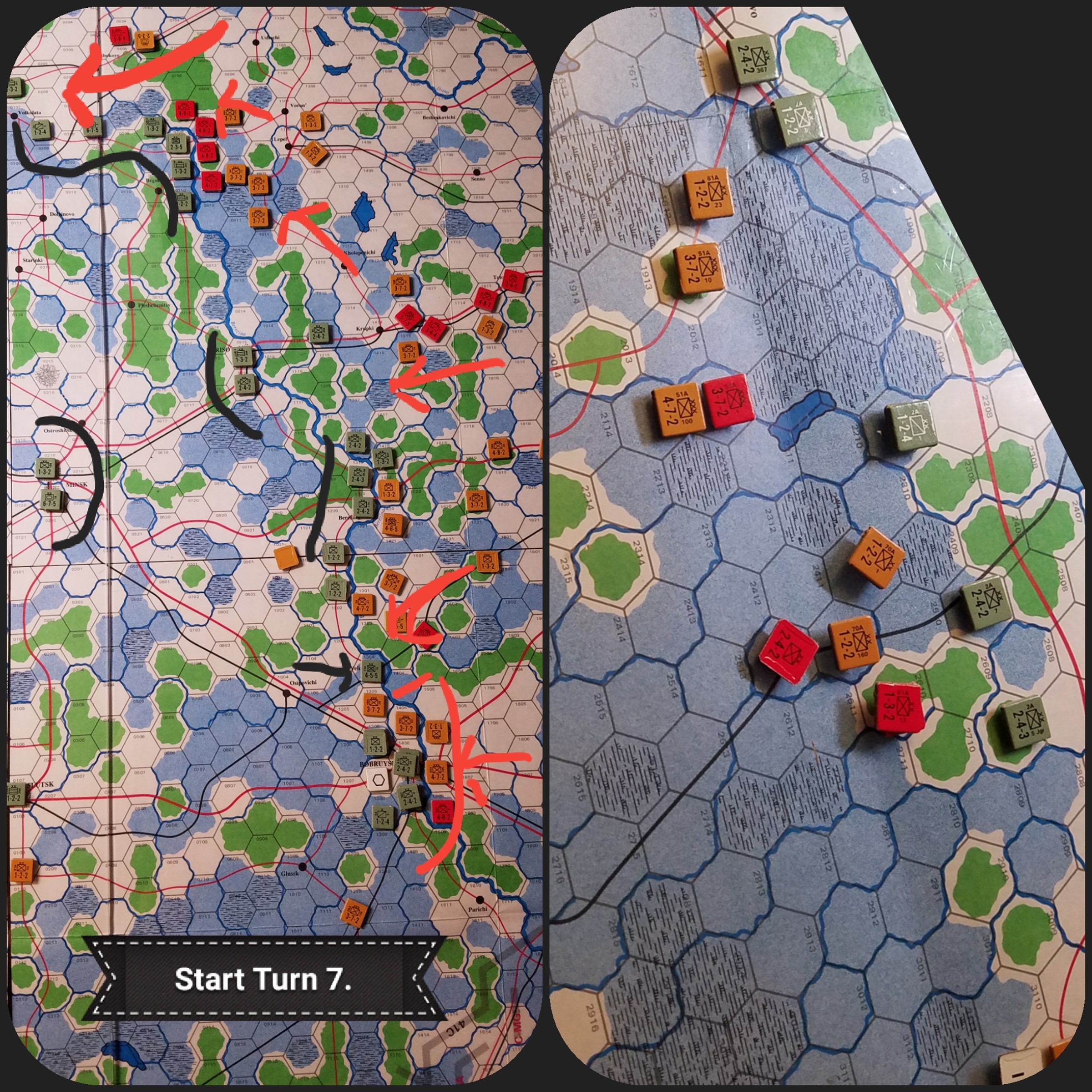
It would appear that while somewhat of a foregone conclusion and thus predictable the first six turns flew by and were very engaging. Both sides narrative is fairly strong. The Soviet is under pressure to achieve goals, and preserve force. The Germans are attempting to delay the inevitable. This creates a nice story line. Soviet forces slowly massing, Germans scrounging fire brigade units and minor counter attacks where they can. There does come a point around turn 10 or so though when the game is all but over if loss rates are too high for one side or the other.
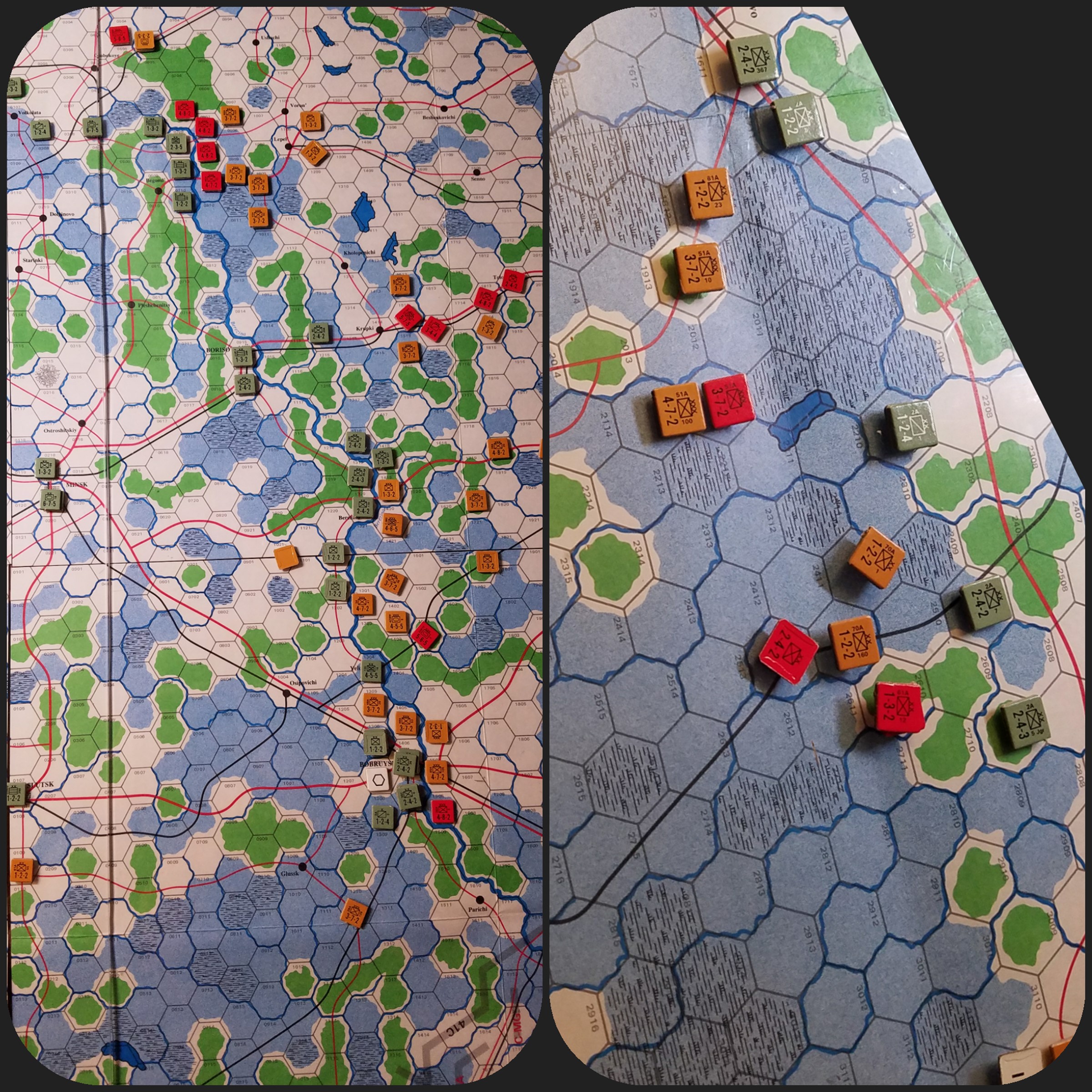
As we can see here North of Minsk there is not much! Units face encirclement and destruction. Which is important to avoid as OOS units killed earn double Veeps.
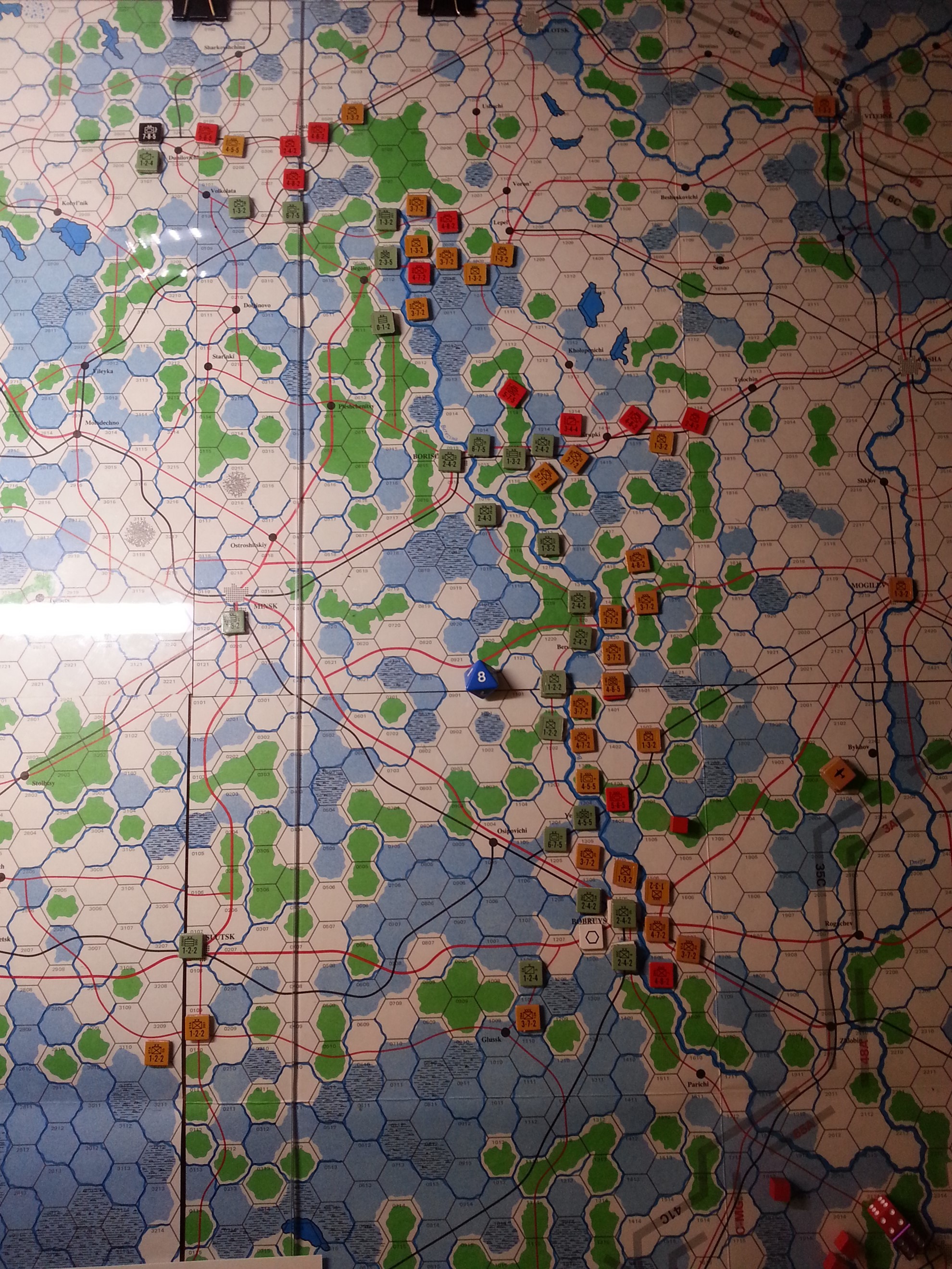
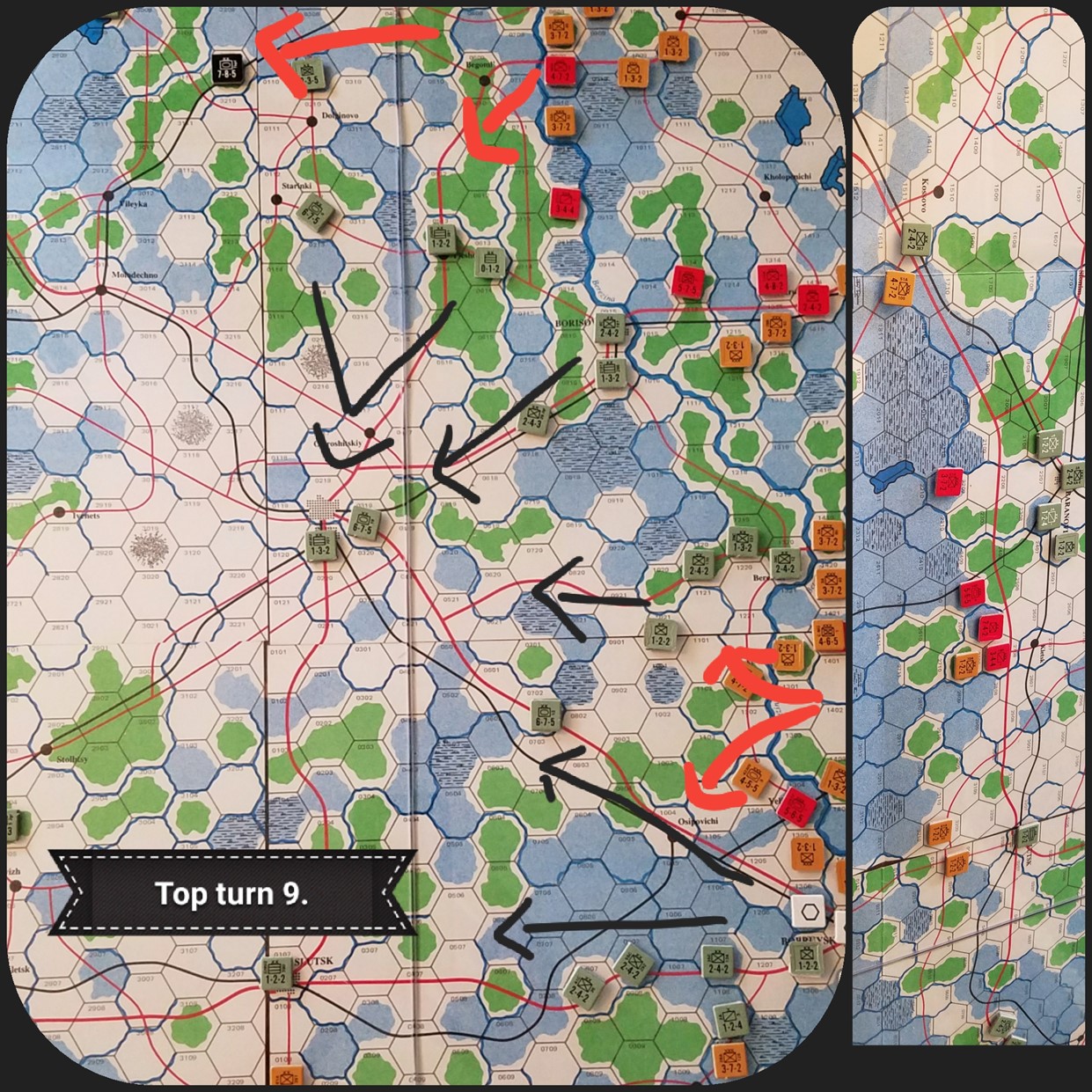
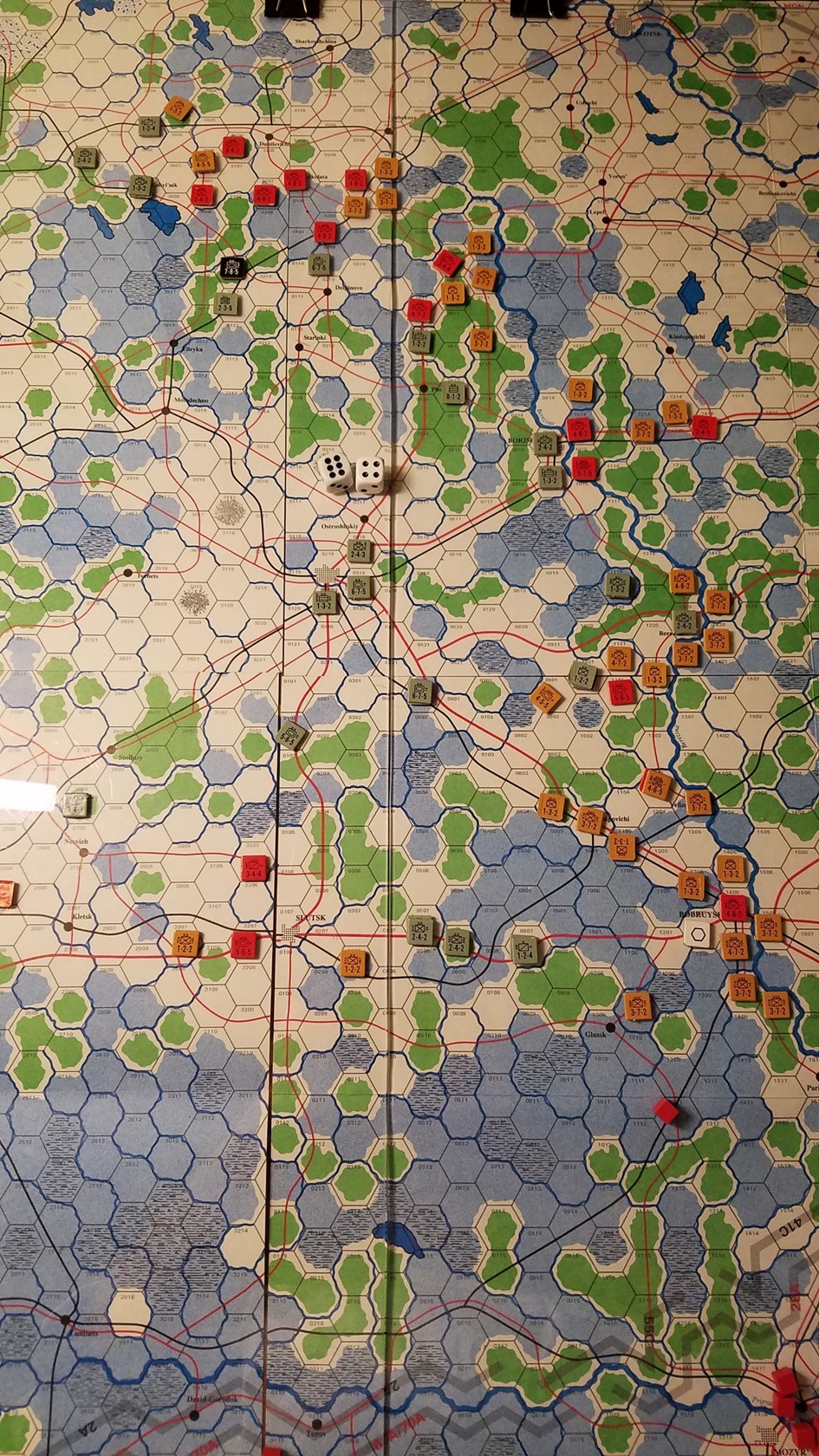
By the end of turn 10 we can see the clear paths the Soviets will pursue and that the Germans have little if anything to stop them with.
The biggest win for the Germans was holding Minsk so long. Loss ratios were horrible but also not as historically high. The game ends with a complete victory for the Soviet armed forces. The replayability here is modest. Once or twice as both sides and no doubt smart players will grok the right and optimized strategies to win as the Soviets and delay the longest as the Germans. The game play time is surprising short and crisp. Each turn can we done in under 25 minutes. Overall I liked the counter quality, the basic 80’s style GDW art work is nothing to write home about but it is highly functional and has a different feel to it on the enlarged hexes which was a nice surprise in this aged game.
